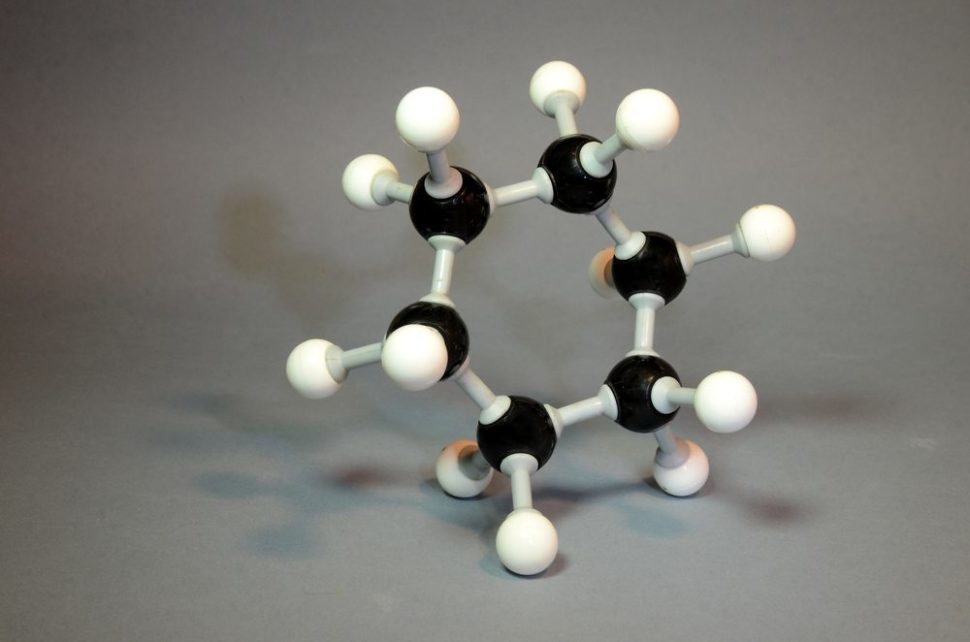Nebraska researchers developed a new form of graphene nano-ribbon that increases the sensitivity of existing gas sensors by 100 times.
I love it when real life starts to resemble Star Trek, don’t you?
Our future-tech present gives us everything from 3D printers, which are not replicators, to advanced sensors, which are getting more like tricorders every day, and tricorders are awesome.

For the uninitiated, the tricorder is basically something the size of a small box or remote control. When you point it at something, you get information on the exact composition of it.
In the Star Trek universe, not only could you figure out exactly what kind of rock you were looking at during analysis, you could also ensure there was no colorless and odorless poison gas in the air as you went to bed.
In our reality, most people just rely on carbon monoxide detectors. In the laboratory, however, gas sensors have to be far more particular and sensitive.
In fact, in the case of a new study out of the University of Nebraska-Lincoln, we may be talking about 100 times more sensitive than a gas sensor that was already much more sophisticated than your average CO detector. The UN-L team developed a new nanocarbon ribbon coating of graphene that outperforms previous designs.
The discovery could lead chemists to synthesize many theoretical applications of nano-ribbons.
Checking out the new Gas Sensors
The team created their sensor by attaching DNA-sized ‘nano-ribbons’ of carbon (graphene) to the surface of a gas sensing chip.
When they put a film of these graphene nano-ribbons on the circuitry of a gas sensor, it made it respond about 100 times more sensitively to molecules than the best-known carbon materials.
That’s pretty cool, but what exactly does it mean? Well, according to Alexander Sinitskii, an associate professor of chemistry at Nebraska, it means that the experiment exceeded their expectations.
“With multiple sensors on a chip, we were able to demonstrate that we can differentiate between molecules that have nearly the same chemical nature,” says Sinitskii. “For example, we can tell methanol and ethanol apart. So these sensors based on graphene nano-ribbons can be not only sensitive but also selective.”

This level of sensitivity is completely new, and the team at Nebraska thinks that may have to do with how the nano-ribbons are arranged. Their nano-ribbons stand upright instead of lying flat on a surface, which may cause an unusual interaction between the ribbons and gas molecules.
Basically, the nano-ribbon arrangement allows for a longer gap for electrons to jump to conduct electricity. That longer gap, known as the band gap, makes the difference, but it isn’t easy to come by.
Of course, the team at Nebraska didn’t let that stop them, so they found an innovative solution in the form of the gas benzene.
Putting a Ring on Gas Sensors
When graphene was discovered in 2004, it quickly became a superconductive miracle material. Its electrical conductivity is unmatched, after all, but for gas sensors, you need a wider conducting band gap, which is where graphene falls short.
That’s where the development of the nano-ribbon comes in. The nano-ribbon helped researchers find the band gap, but it was difficult to do with precision and the process was difficult to scale up.
Enter Sinitskii in 2014. He pioneered a different approach that could mass produce nano-ribbons using a liquid solution, making them a bit more viable for research. There was a problem, however, with the conductivity of the films made from this process.
To solve the problem, the team added some benzene rings that widened the ribbon, reducing the band cap and boosting its conductivity.
And thus, a new kind of gas sensor was born. One that is 100 times more sensitive than before.
The team is not stopping there, either. According to Sinitsky, “It is very likely that new nano-ribbons with even better sensor characteristics or other exciting properties will be developed in the near future.”
So maybe one day soon I’ll get that tricorder I’m hoping for. The medical and research fields could certainly use such a thing, after all.



















Comments (0)
Most Recent